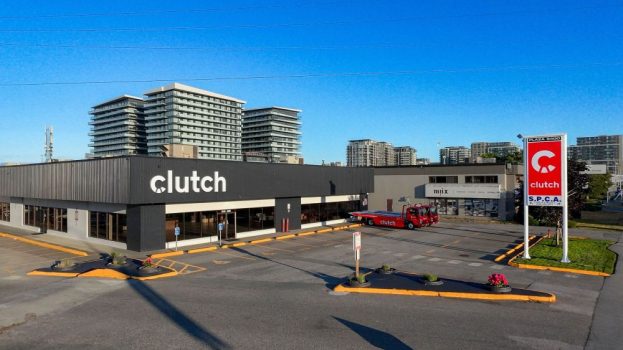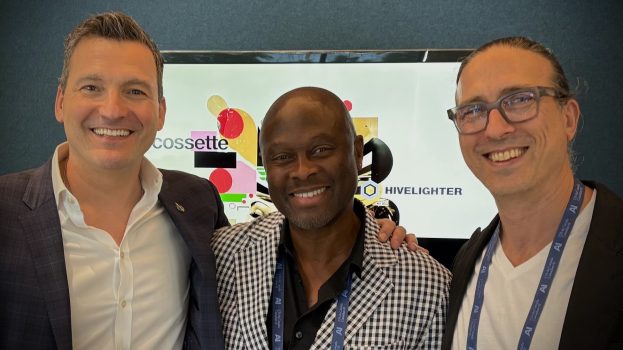You are reading a story from Strategy Ad Tech, a weekly look at the strategies, partners and processes that are helping brands drive innovation and utilize new technology, both internally and with consumers. Have the stories delivered directly to your inbox every Thursday by subscribing to the newsletter.
The next time you place an order with Foodora, the meal you bought may be delivered by a robot.
The Toronto-based food delivery company has partnered with Tiny Mile Robots – a robotics company working within Ryerson University’s Design Fabrication Zone – to create “Geoffrey,” a waterproof, ten-pound delivery robot that can carry up to six pounds of takeout in his locked trunk – the equivalent of an $80 order.
Nicknamed after computer scientist and AI pioneer Geoffrey Hinton, “Geoffrey” is one of three robots Foodora is currently using to make deliveries in downtown Toronto, within a one-mile radius of a restaurant. The robot has a six km/h top speed and is equipped with a 12-hour battery, five cameras and remote-controlled, wide-angle zooming capabilities that allow the bot to view building addresses during day and night.
“We’ve been doing a very small number of deliveries and the results have been great,” David Albert, Foodora Canada’s managing director, says of the pilot project, which has been running for several months. “Delivery through the robot is harder than just getting something from point ‘A’ to point ‘B,’ because you have to deal with the restaurant and our customer on the other end. But, in short, we’re very interested in the opportunities and we see how it plays in the food delivery world in the long term. At this point, it’s still very small in terms of [total delivery] volumes.”
Currently, plans are for Tiny Miles to substantially expand the Foodora AI fleet and have 50 robots delivering at some point in Q2. Albert says that Foodora is trying to actively support companies working in the robotics space because of the obvious applications it has to its business, and this is the first effort to see first-hand the role it might have in the future. He adds that this could also provide an entry into other forms of non-human delivery, such as through autonomous vehicles.
“We’re not actively trying to be a manufacturer of this technology, but we’re very interested in working with the companies that are and learning whether it can be a fit in our world of delivery,” he says.
He adds that consumer response to robot delivery – which costs the same as employee delivery – has been positive.
“One thing that has been quite interesting to us is that even though the number of deliveries we’ve done has still been fairly small, the average rating from customers is actually higher then when a human delivers the food,” Albert reports. “I think a lot of it centres around novelty – just that the customer is curious and surprised when it shows up. But we basically have no data points that indicate that we shouldn’t be satisfied.”
There has also been an expected spike in food delivery services like Foodora, as well as delivery offerings from grocery stores, as COVID-19 spreads in Canada and people limit time in public to limit the risk of infection. Albert could not comment specifically on the role COVID-19 might have in its business, but Foodora has been among the delivery companies communicating to users and couriers what they should do to remain healthy, as well as other steps they can take, such as providing notes to a courier in the app to inform them of where they can leave orders to limit contact and tipping couriers extra to “reflect the extra effort of” couriers during the time.
























